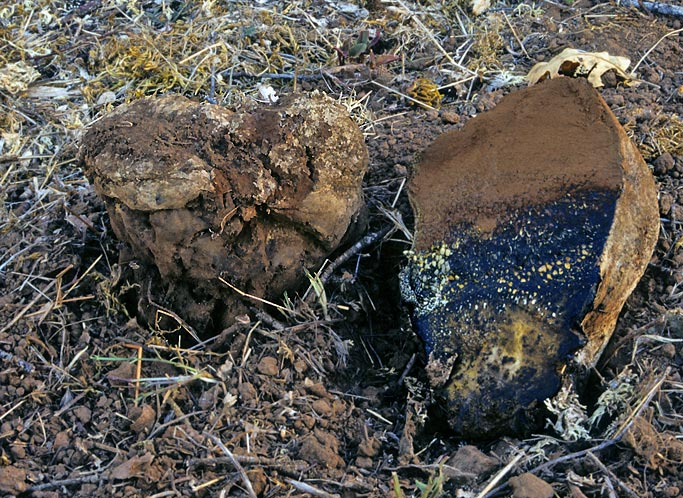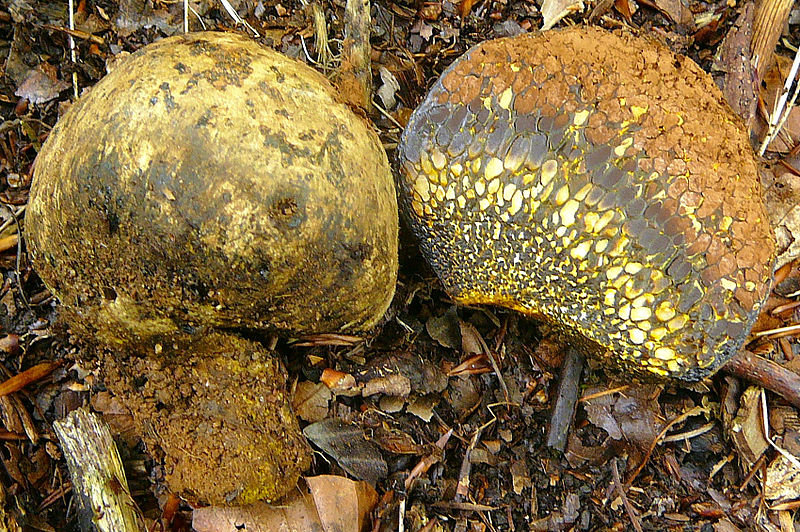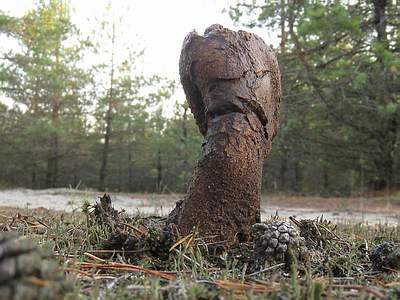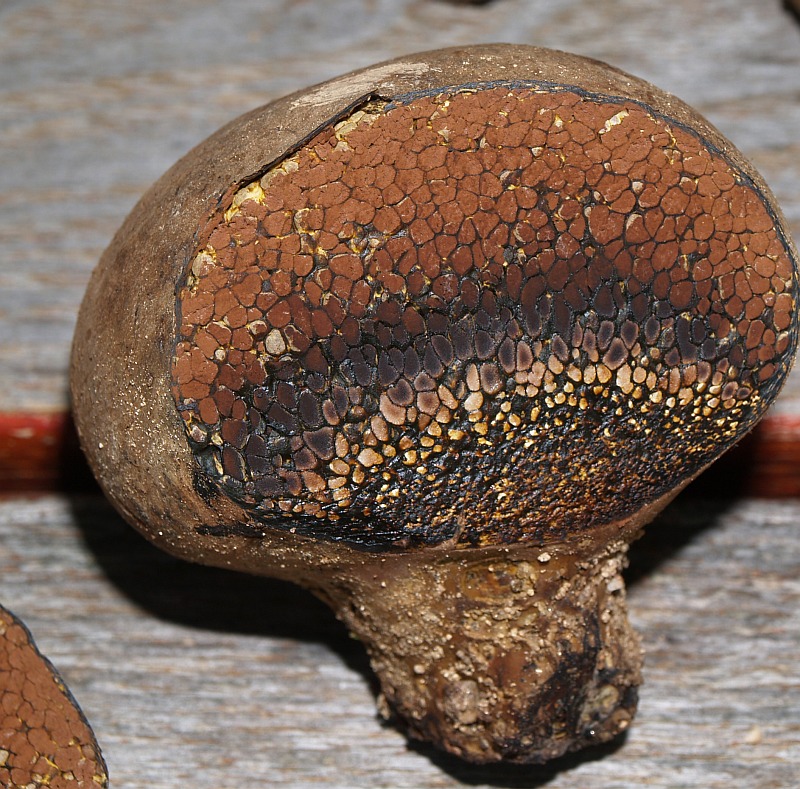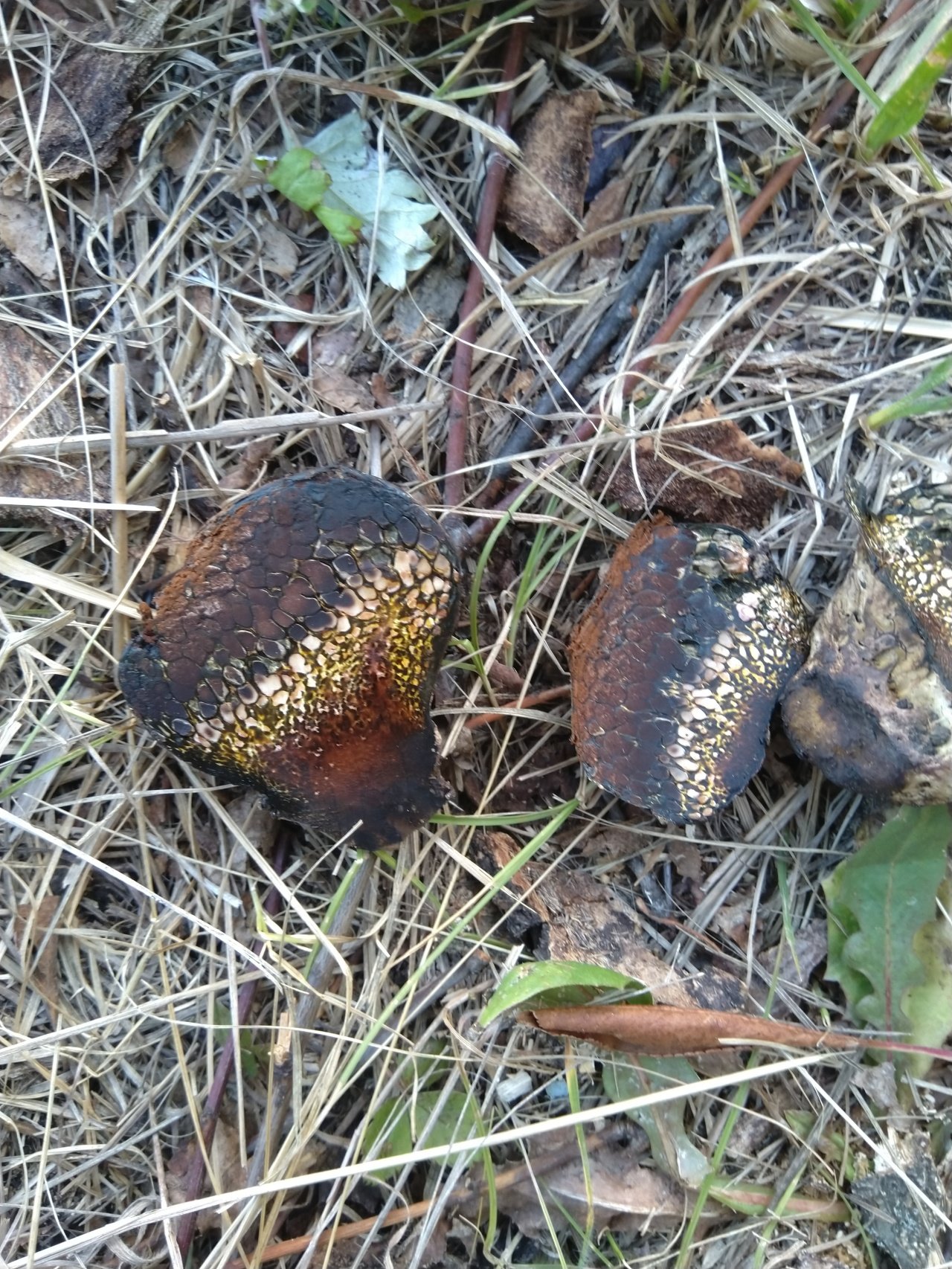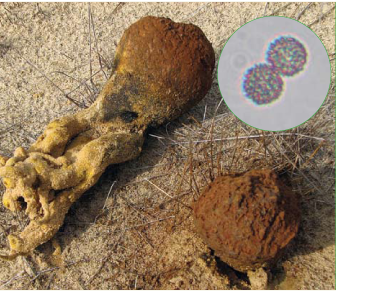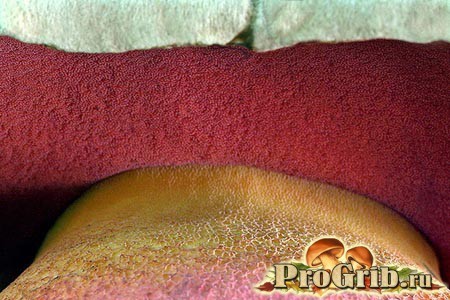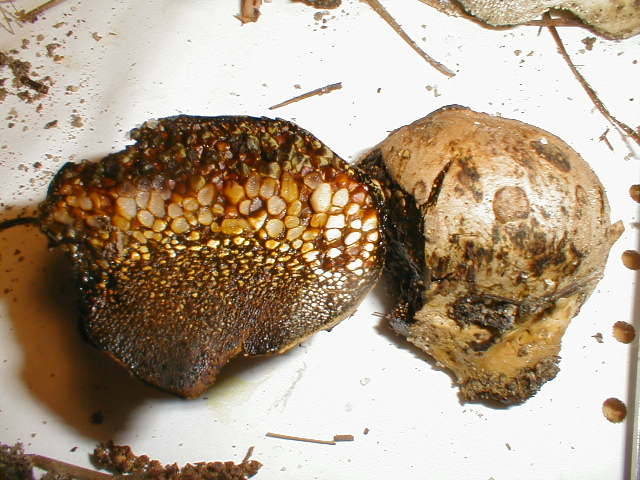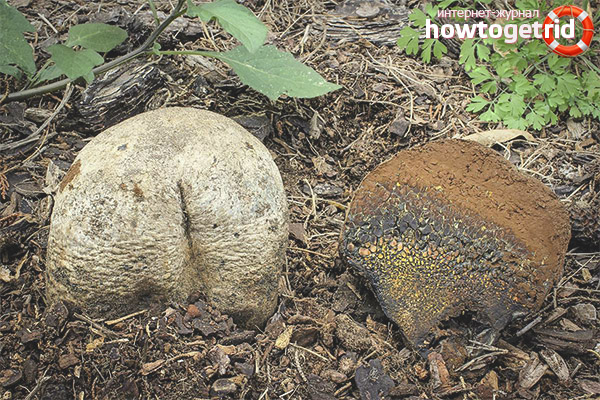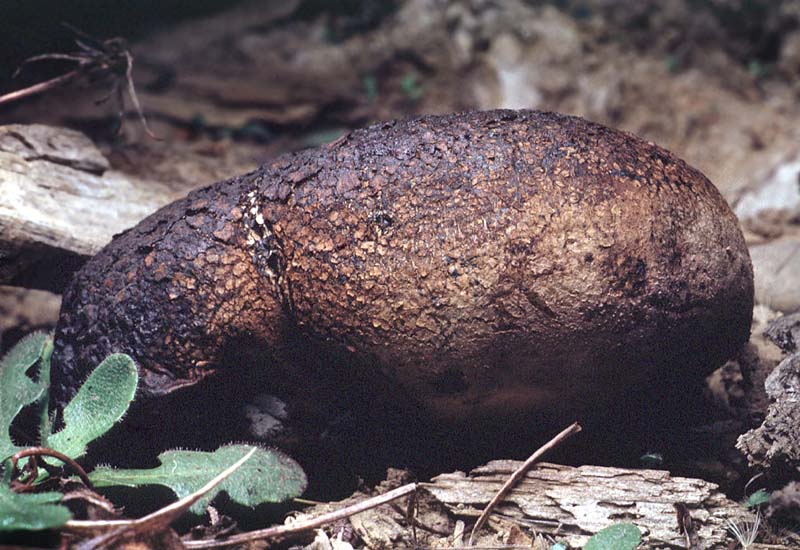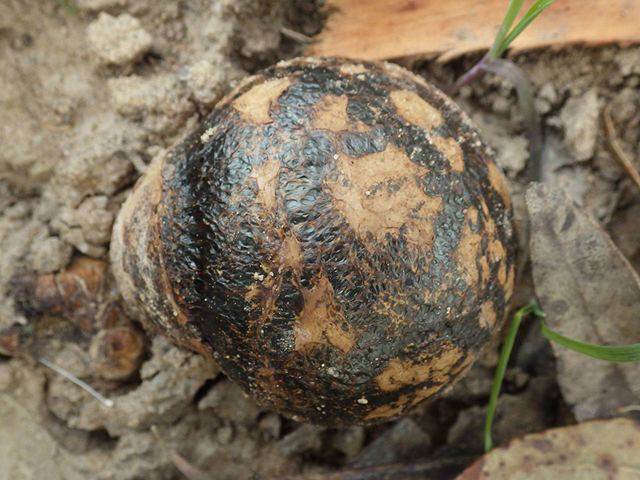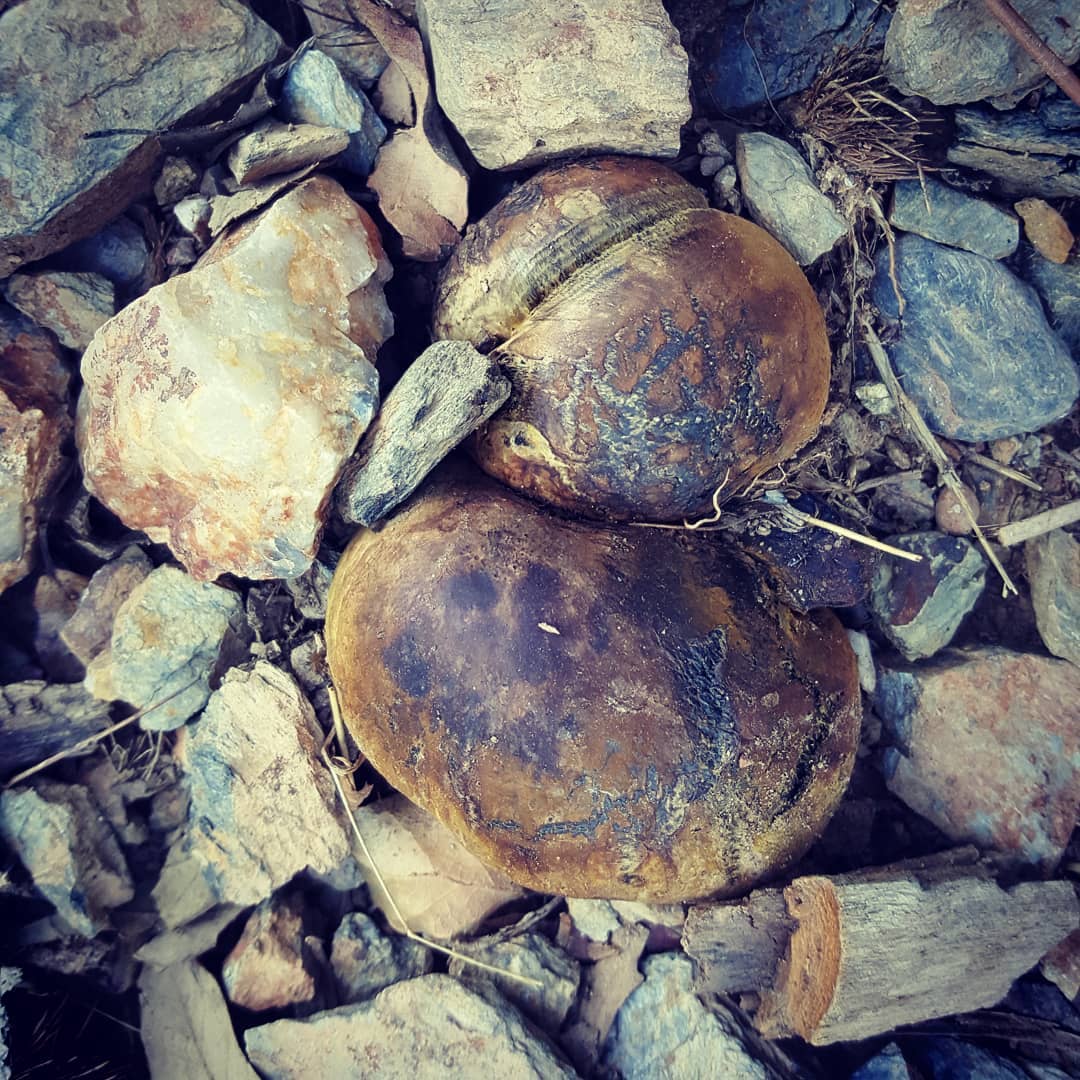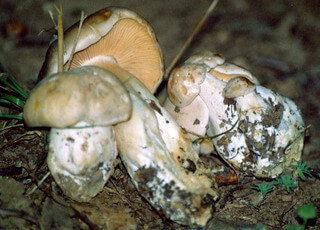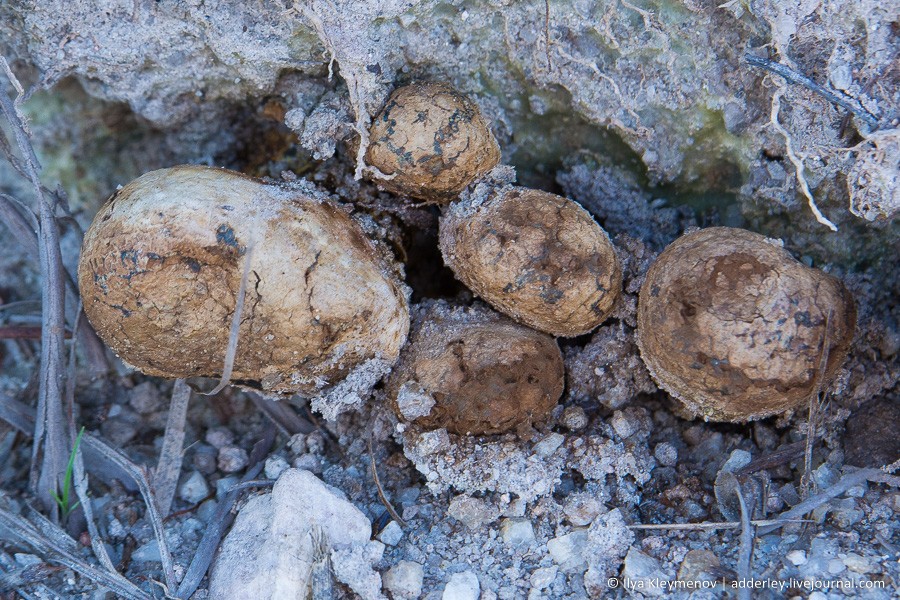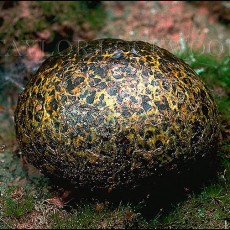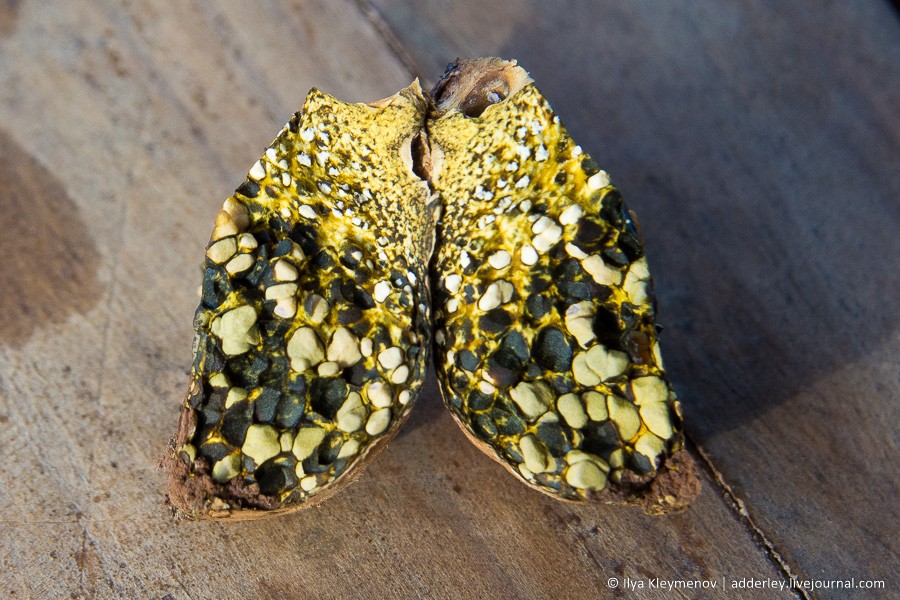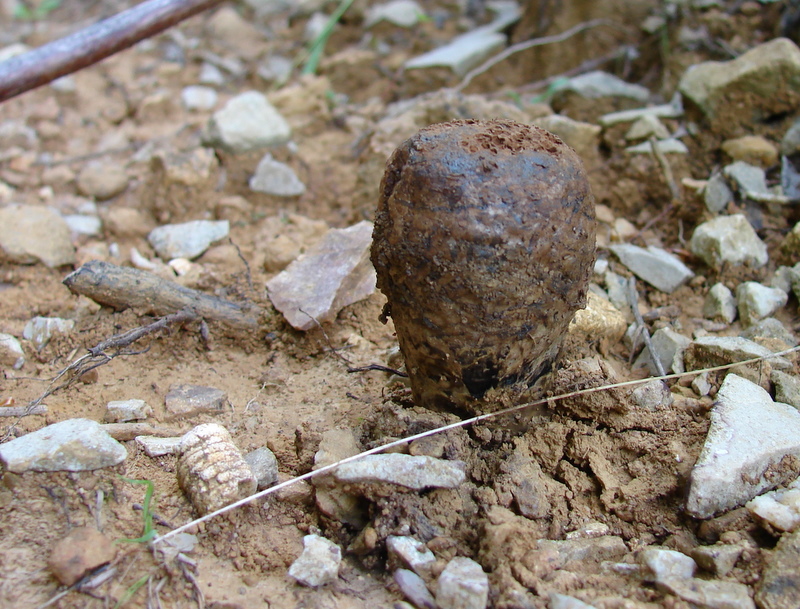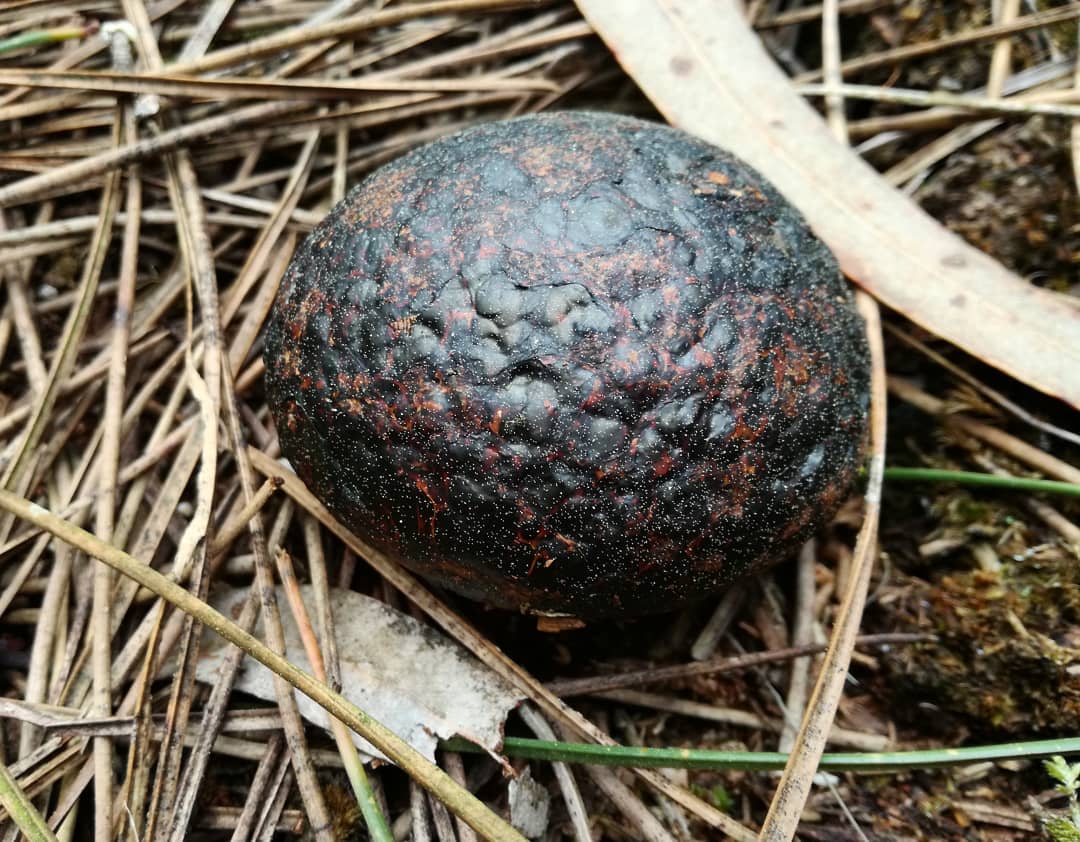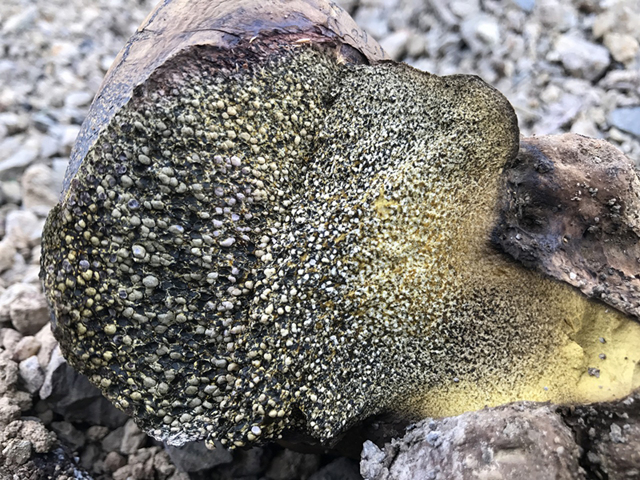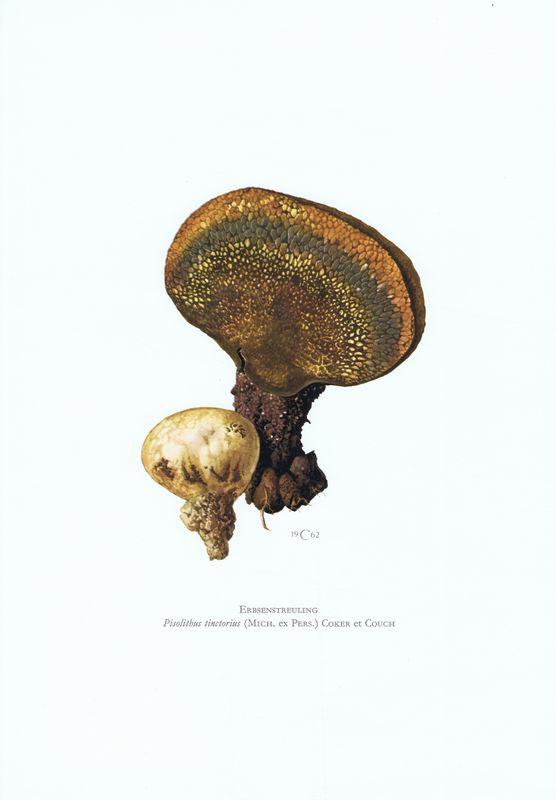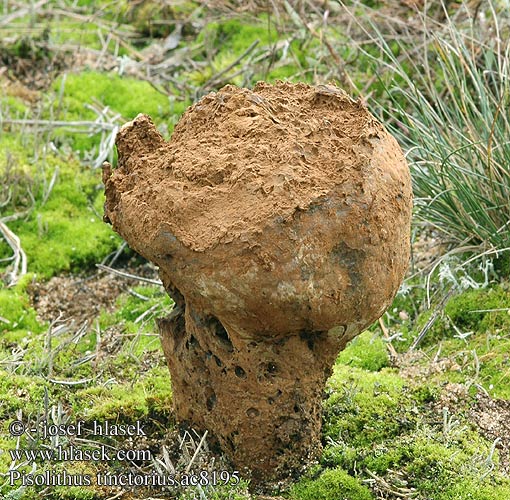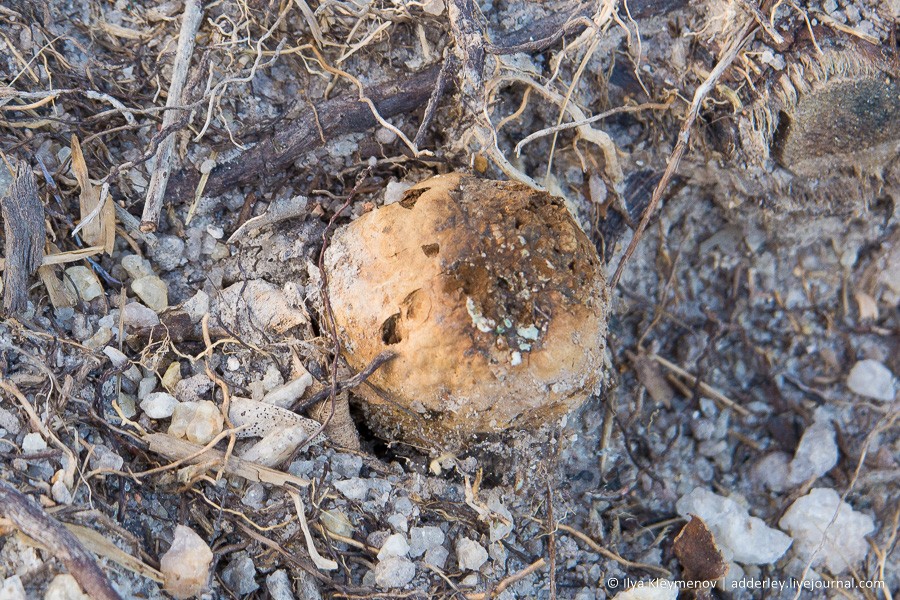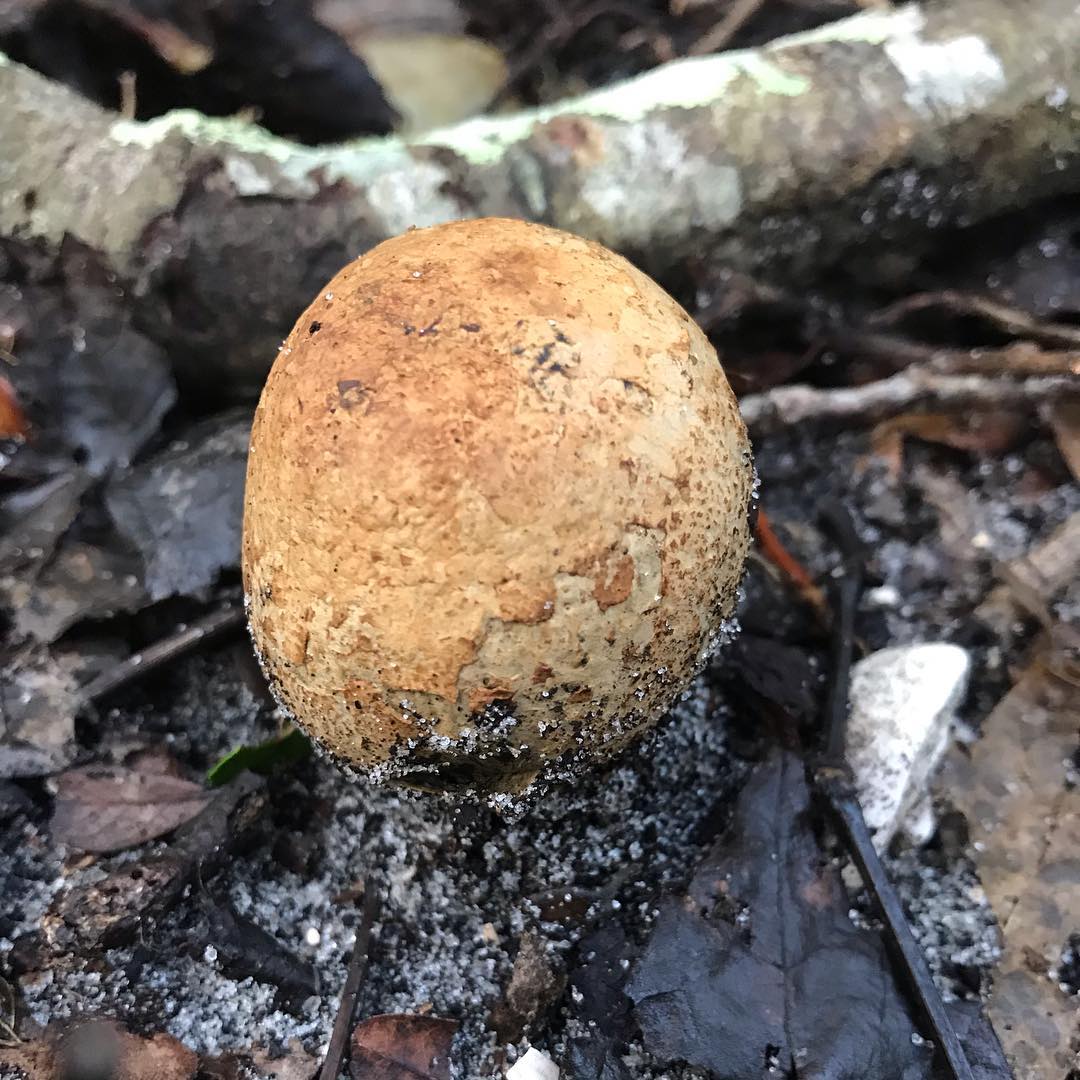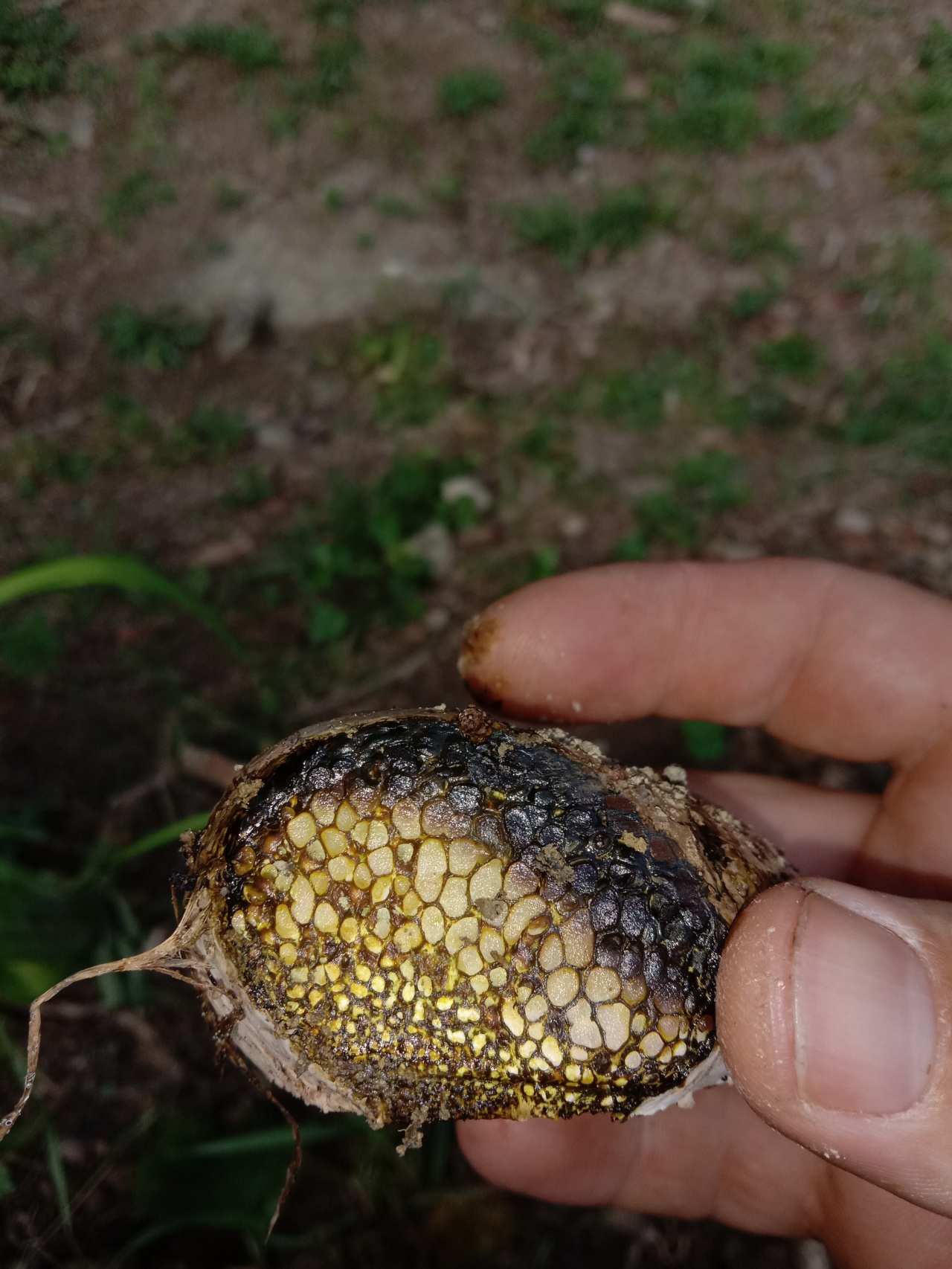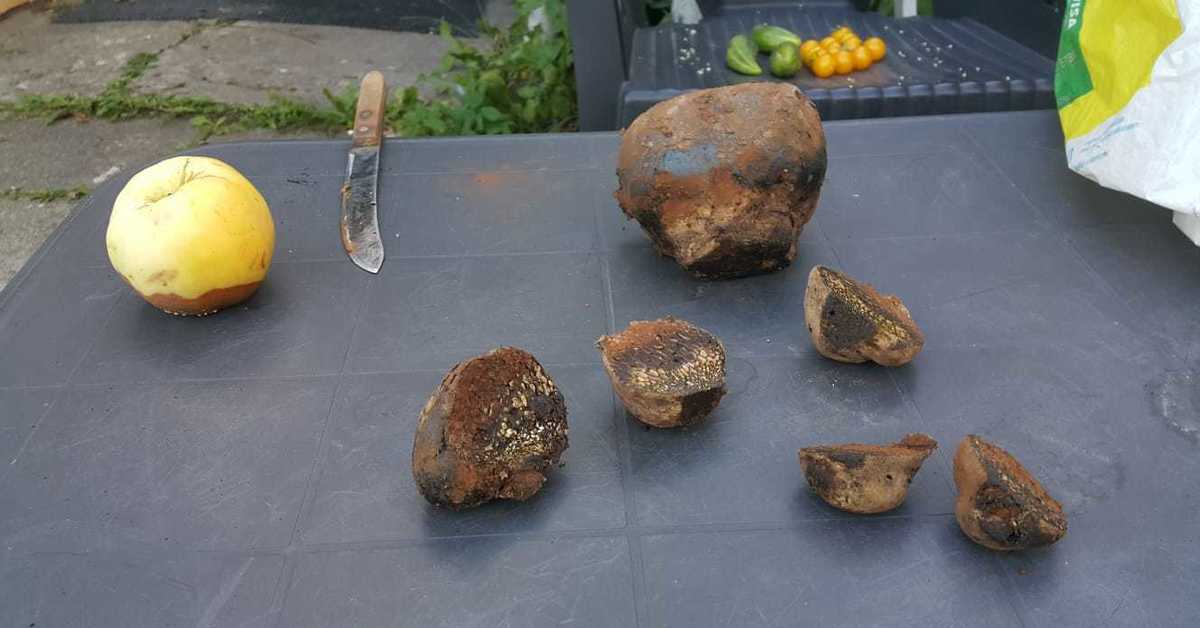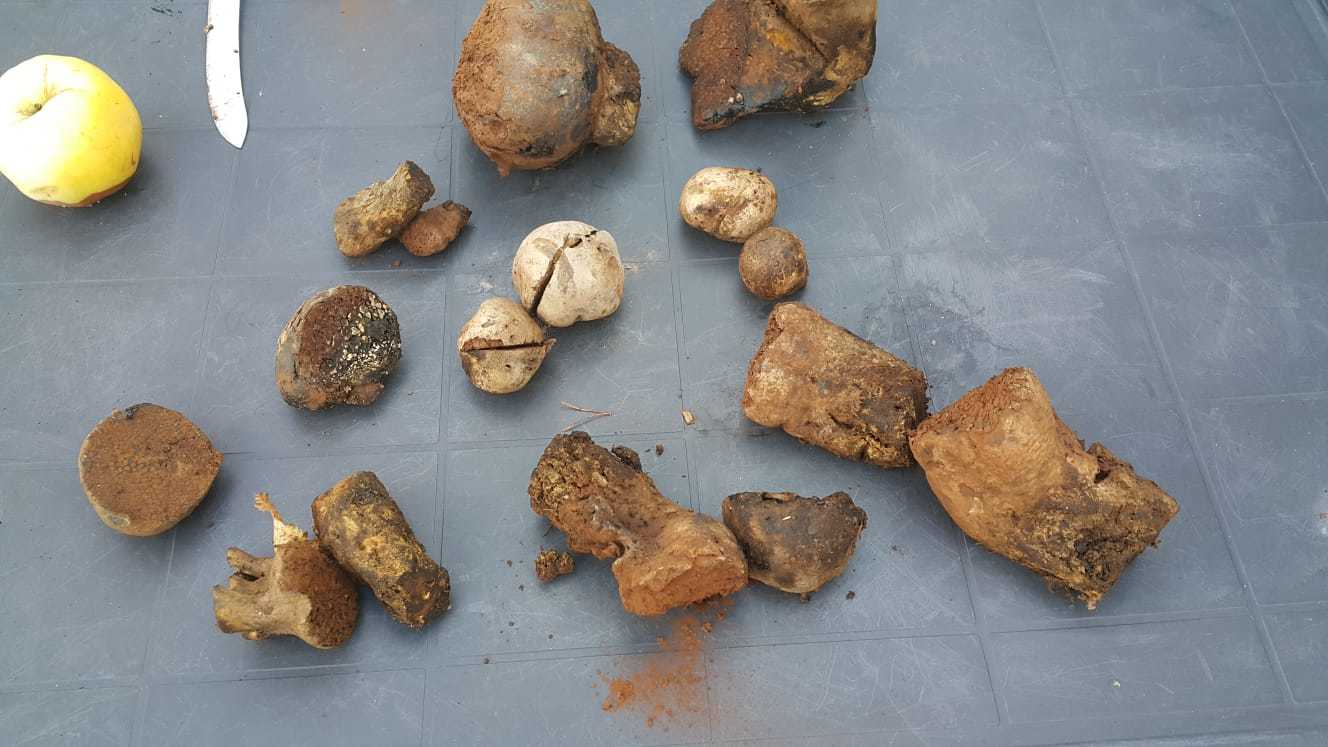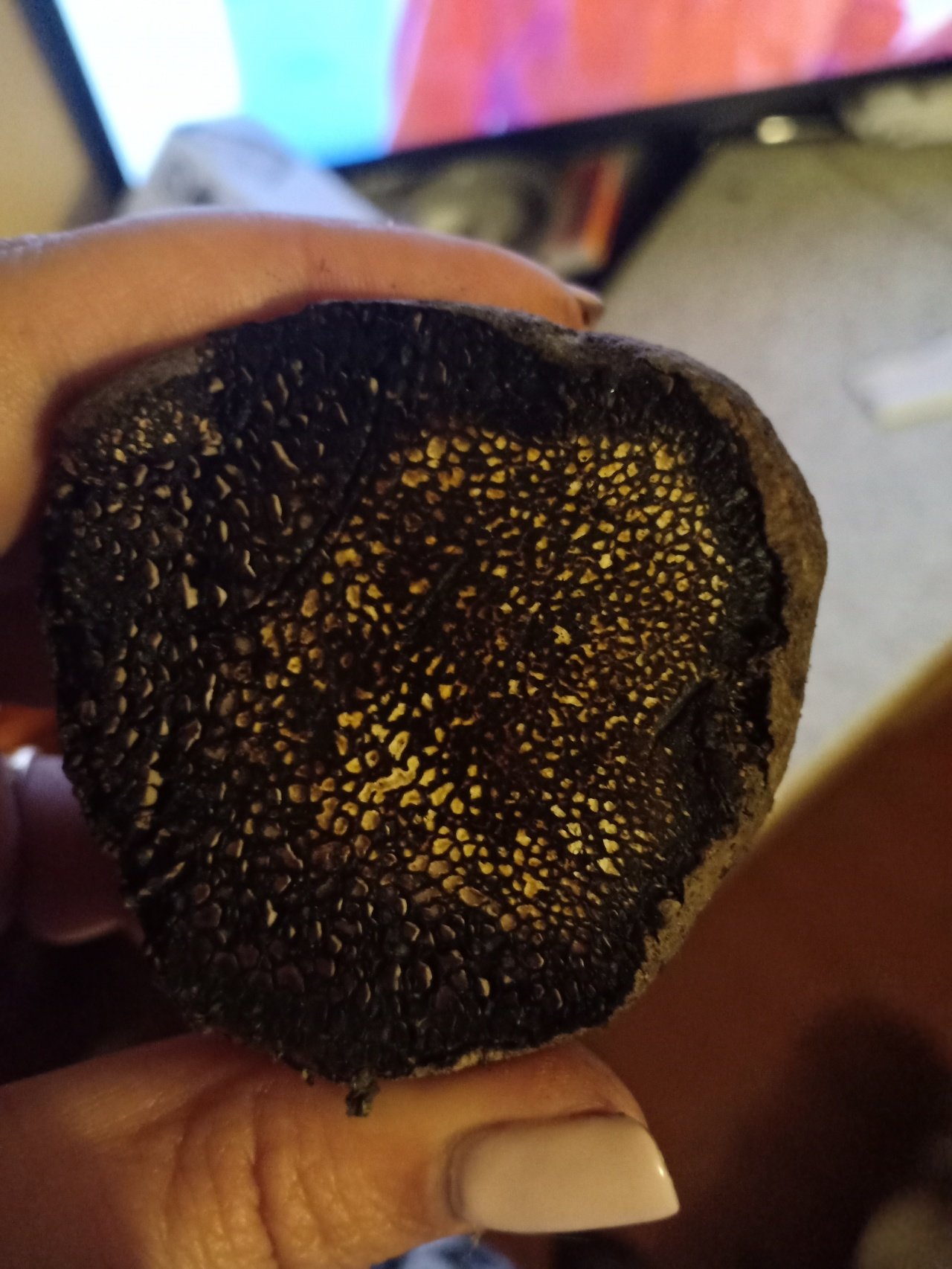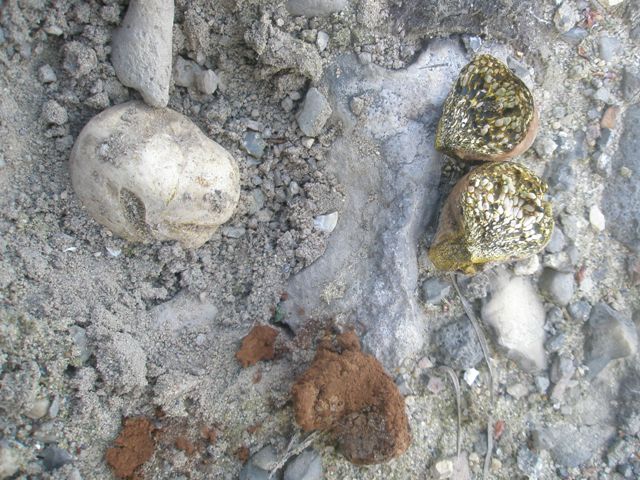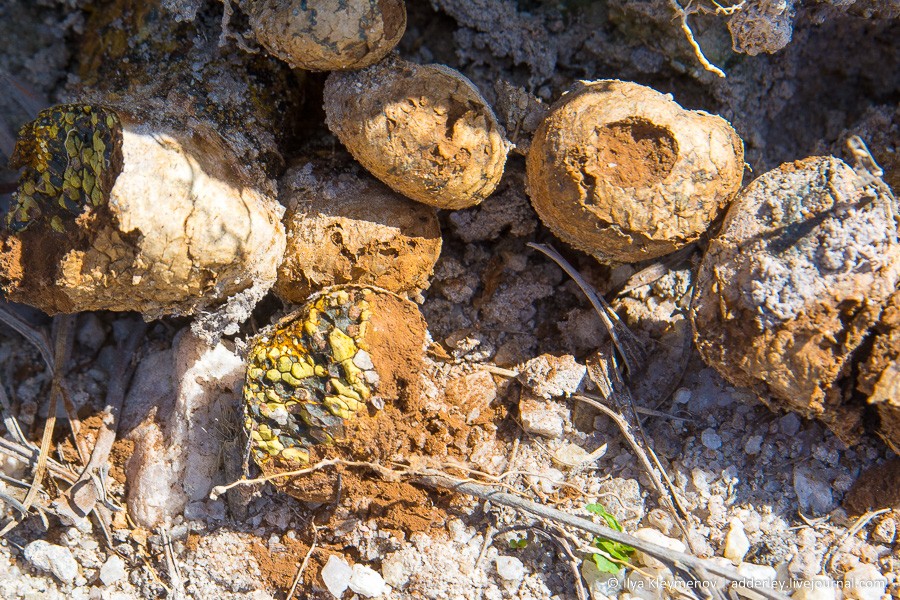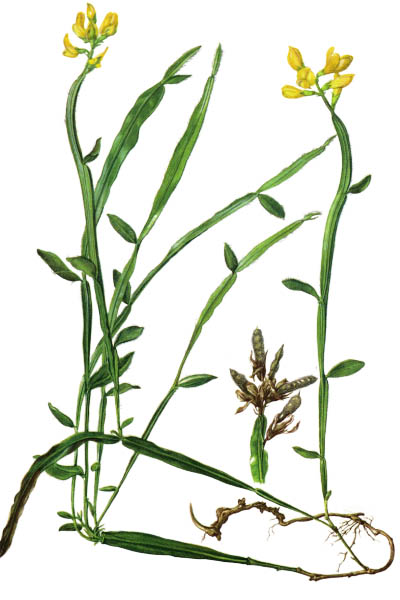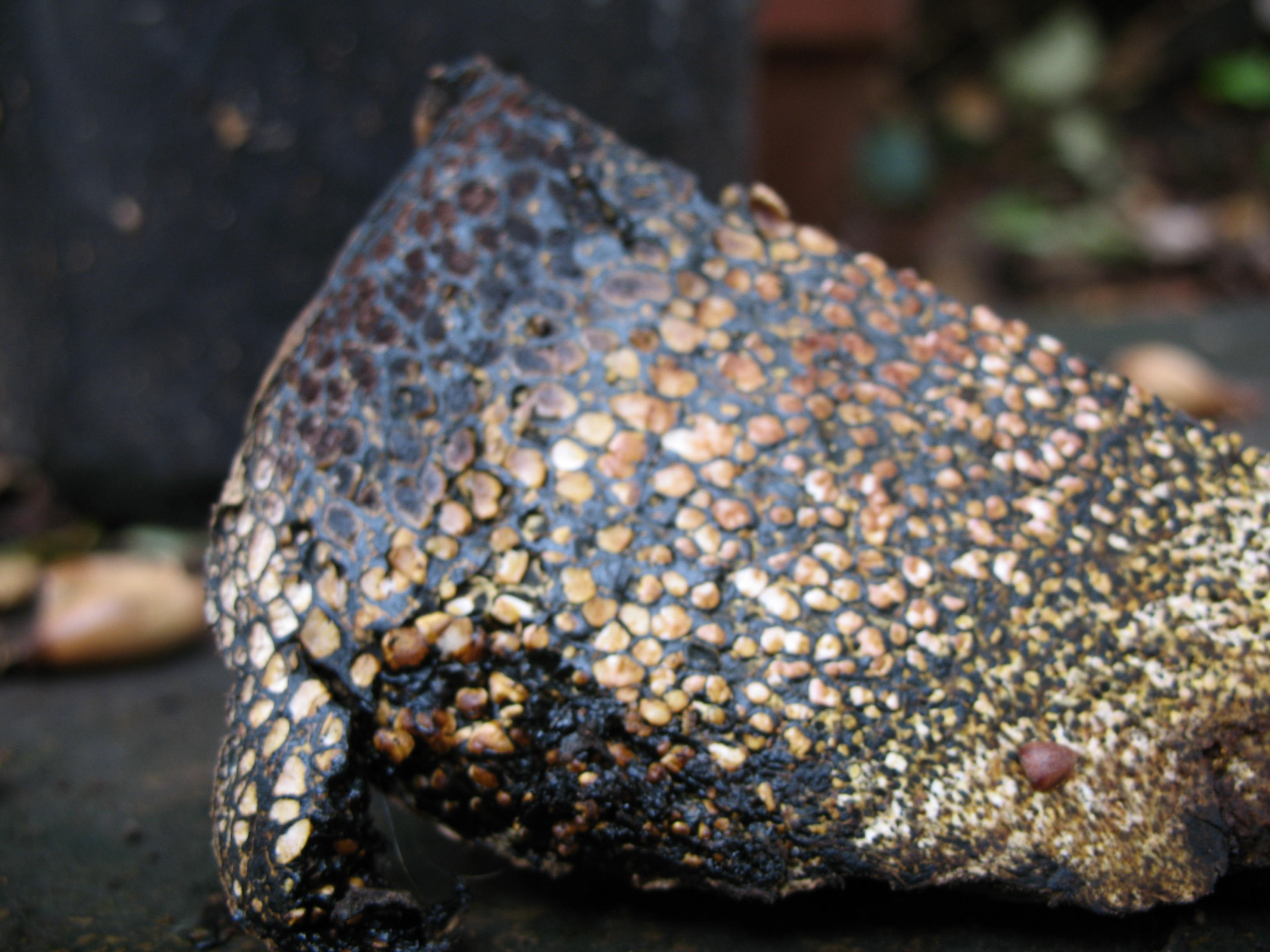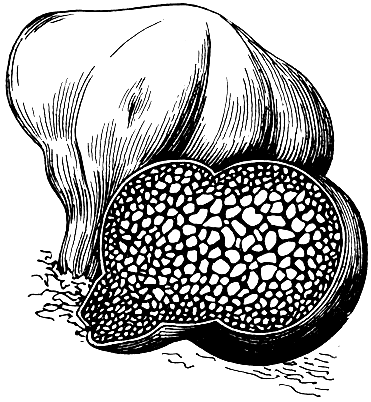Notes (edit)
- Coker, W. C .; Couch, J.N. The Gasteromycetes of the Eastern United States and Canada The Gasteromycetes of the Eastern United States and Canada. - Chapel Hill: The University of North Carolina Press, 1928 .-- pp. 1-201.
- K. G. Mukerji, B. P. Chamola, Jagjit Singh. Mycorrhizal Biology. - New York: Academic / Plenum Publishers, 2000 .-- S. 37 .-- 336 p.
- (unavailable link). Date of treatment November 17, 2009.
- Surček, M. The Illustrated Book of Mushrooms and Fungi. —The Octopus Publishing Group. 1988.
- The world of plants: in 7 volumes / Ed. Academician A.L. Takhtadzhyan. T.2. Slime molds. Mushrooms - 2nd ed., Rev. - M .: Education, 1991 .-- 475 p. (p. 338).
- (unavailable link)
Season and habitat of the mushroom
Previously, the rootless mushroom Pisolíthus tinctorius was classified as a cosmopolitan, and it could be found almost everywhere, except in the regions located beyond the Arctic Circle. Now the boundaries of the habitat of this fungus are being revised, since some of its subspecies, growing, for example, in the southern hemisphere and the tropics, are classified as separate species. Based on this information, we can say that the rootless Pisolithus is found in the Holarctic, but its varieties found in South Africa and Asia, Central Africa, Australia, New Zealand, most likely belong to related types. On the territory of Russia, Pisolithus rootless can be seen in Western Siberia, in the Far East and in the Caucasus. The period of the most active fruiting occurs in summer and early autumn. Grows either singly or in small groups.
The dye pisolithus grows mainly on acidic and poor soils, in forest clearings, gradually overgrowing, on green dumps and gradually overgrown quarries. However, these fungi can never be seen on limestone-type soils. It is extremely rare that it grows in forests that are practically untouched by humans. Can form mycorrhiza with birch and coniferous trees. It is a mycorrhizal agent with eucalyptus, poplars and oaks.
Names
Scientific synonyms:
- Lycoperdon capitatum J.F. Gmel., 1792 basionym
- Scleroderma tinctorium Pers., 1801
- Pisolithus arhizus (Scop.) Rauschert, 1959
- Lycoperdodes arrhizon (Scop.) Kuntze, 1891
Russian names: along with pisolithus dyeing, the synonym Pizolitus rootless (Pisolithus arhizus).
The binomial name Pisolithus tinctorius Jeppson was first given in The Gasteromycetes of the Eastern United States and Canada The Gasteromycetes of the Eastern United States and Canada.
Generic name Pisolithus comes from the Greek words πίσος (pisos) - "peas" and λίθος (lithos) - "stone"; species epithet tinctorius - from lat. tinctorius - "dyeing".
Rootless pisolithus (Pisolithus arhizus)
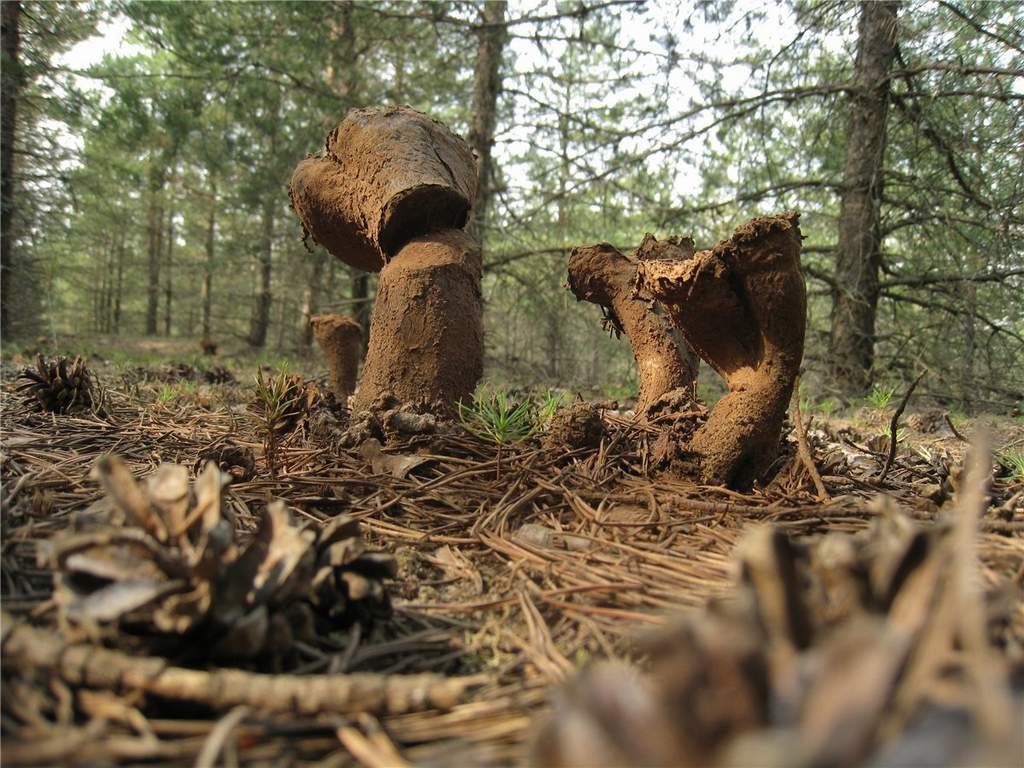
Fruit bodies:
pear-shaped or club-shaped, rounded at the top or irregularly spherical. Fruit bodies, elongated, pitted, branched at the base, or sessile. The thickness of the false stem is from 1 to 8 centimeters, most of the stem is hidden underground. The spore-bearing part reaches 2-11 centimeters in diameter.
Peridium:
smooth, thin, as a rule, uneven, tuberous. At a young age, brittle ocher-yellow in color, then turns yellow-brown, red-olive or dark brown.
Gleb:
Gleb of a young mushroom contains a large number of whitish capsules with spores, which are immersed in tram - a gelatinous mass. At the cut site, the fruit body has a grainy, beautiful structure. Ripening of the mushroom begins from the top and gradually ends at its base.
As the mushroom matures, the gleb breaks down into several uneven, pea-shaped peridiols. Angular peridiols, initially sulfur yellow, then reddish brown or brown. A ripe mushroom becomes similar to animal excrement, rotten stumps or semi-rotten roots. The destroyed peridiols form a dusty powdery spore mass. Young fruiting bodies have a slight mushroom smell. Ripe mushrooms have an unpleasant odor.
Spore Powder:
Brown.
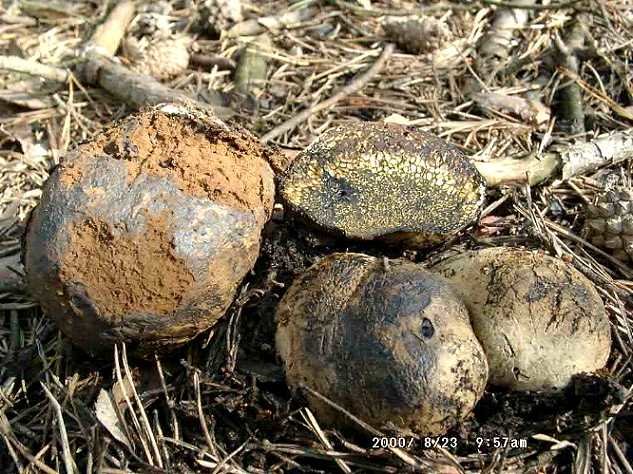
Spreading:
Pizolitus Rootless is found on drained disturbed or acidic soils. Grows in small groups or singly. Prefers mine ovals, greened old quarries, overgrown clearings along old roads and paths. Resistant to very acidic soils and soils containing heavy metal salts. Fruiting from summer to early autumn.
Edibility:
Some sources call the mushroom edible at a young age, while others do not recommend eating it. Some reference books indicate the use of the mushroom as a seasoning.
Similarity:
At a young age, this species can be mistaken for the Warty Puffin.
Remarks: Pizolitus Beskornevoy has a practical purpose for reforestation in areas with disturbed soils. Forms mycorrhiza with pine and some other species. In southern Europe it is used as a yellow dye. Isolated from Pizolitus, Pisosterol has antitumor activity. A rare species included in the red lists of the Rostov region, Buryatia and some other countries.
Description
The fruit body is large, 5–20 (30) cm high, 4–11 (20) cm in diameter, in young mushrooms it is spherical, later clavate or irregular in shape, with a dense, fibrous, deeply rooted false stem 1–8 cm long and 2– 3 cm in diameter, occasionally sessile, with greenish-yellow mycelial strands.
The peridium is very thin, approx. 1 mm thick, at first soft and whitish, then dry and brittle, yellowish, buffy with olive-black spots; smooth, later cracks and falls off in flakes, revealing a brownish spore mass.
Gleb in young mushrooms consists of small (5 x 2 mm) rounded white or yellowish peridioles immersed in a black gelatinous mass; at the base of the fruiting body, the peridioli are smaller. Ripen starting from the top of the fruiting body. Over time, the peridiols turn reddish brown and disintegrate, turning into a powdery yellowish brown spore mass. The smell of young mushrooms is not expressed, mushroom, later - unpleasant.
Micromorphology edit code
Spores 7–12 µm in diameter, round, thick-walled, yellowish-brown, with spines 1–2.3 µm in length. Buckles are present.
Season and habitat of the mushroom
Previously, the Scleroderma tinctorium (Pisolíthus tinctorius) mushroom was classified as a cosmopolitan, and it could be found almost everywhere except in the regions located above the Arctic Circle. Now the boundaries of the habitat of this fungus are being revised, since some of its subspecies, growing, for example, in the southern hemisphere and the tropics, are classified as separate species. Based on this information, we can say that Scleroderma tinctorium is found in the Holarctic, but its varieties found in South Africa and Asia, Central Africa, Australia, New Zealand, most likely belong to related types. In Russia, Scleroderma tinctorium can be seen in Western Siberia, the Far East and the Caucasus. The period of the most active fruiting occurs in summer and early autumn. Grows either singly or in small groups.
The dye pisolithus grows mainly on acidic and poor soils, in forest clearings, gradually overgrowing, on green dumps and gradually overgrown quarries. However, these fungi can never be seen on limestone-type soils. It is extremely rare that it grows in forests that are practically untouched by humans. Can form mycorrhiza with birch and coniferous trees. It is a mycorrhizal agent with eucalyptus, poplars and oaks.
Interesting Facts
Some types of gasteromycetes are used in medicine: pizolitus - for the manufacture of medicines for cancer and common veil - for ailments such as rheumatism and gout. Gleb of certain types of bigheads is an excellent hemostatic agent.
For today, the listed properties of the family of gasteromycetes are practically limited to this. In the future, the study of species related to pisolithus as a source of biologically active substances and antibiotics, which are currently isolated only in some species of bigheads, as well as in such a fungus as giant Langermania.That is, this suggests that a species such as pisolithus and its varieties is a peculiar and poorly studied group of mushrooms.
List of species
There are only 12 species in the genus, of which the dye pisolithus is best known:
| Binomial name | Year | Spreading | Notes (edit) |
|---|---|---|---|
| Pisolithus abditusKanch., Sihan., Hogetsu & Watling | 2003 | Thailand. | A new species discovered in g. |
| Pisolithus albus (Cooke & Massee) Priest | 1998 | Endemic to Australia; introduced in other countries (Spain, China, Morocco, etc.). | |
| Pisolithus arenariusAlb. & Schwein. | 1805 | Often referred to as a synonym for Pisolithus tinctorius (Pers.) Coker & Couch | |
| Pisolithus aurantioscabrosusWatling | 1995 | Malacca Peninsula. | Under the trees of the kind Shorea parvifolia. |
| Pisolithus australis(Lév.) E. Fisch. | 1900 | Australia. | |
| Pisolithus hypogaeusS.R. Thomas, Dell & Trappe | 2003 | Endemic to Australia. | Grows on sandy soil under eucalyptus trees. |
| Pisolithus indicusNatarajan & Senthil. | 2005 | Karnataka, India. | It grows in symbiosis with Indian vateria. |
| Pisolithus kisslingiiE. Fisch. | 1906 | Sumatra. | |
| Pisolithus marmoratus(Berk.) E. Fisch. | 1900 | Australia, New Zealand. | |
| Pisolithus microcarpus (Cooke & Massee) G. Cunn. | 1931 | Australia. | Forms mycorrhiza with eucalyptus. |
| Pisolithus pisiformis(Lloyd) Rick | 1961 | ||
| Pisolithus tinctorius(Pers.) Coker & Couch | 1928 | Holarctic. | Typical view. |
Notes (edit)
- Binder M, Hibbett DS, Larsson K-H, Larsson E, Langer E, Langer G. (2005). The phylogenetic distribution of resupinate forms across the major clades of mushroom-forming fungi (Homobasidiomycetes). Systematics and Biodiversity 3 (2): 113-157
- Binder M, Bresinsky A. (2002). Derivation of a polymorphic lineage of Gasteromycetes from boletoid ancestors. Mycologia 94(1): 85-98.
- David Arora. Mushrooms demystified: a comprehensive guide to the fleshy fungi. - Ten Speed Press: 1986 - pp. 959 (p. 711)
- Kanchanaprayudh, J., Zhou, Z., Yomyart, S., Sihanonth, P., Hogetsu, T. & Watling, R. A new species of Pisolithus abditus, an ectomycorrhizal fungus associated with dipterocarps in Thailand (fr.) // Mycotaxon (fr.) Russian .. - Ithaca: Mycotaxon, 2003. - Vol. 88. - P. 463-467.
- Francis Martin, Jes's Dnez, Bernard Dell, Christine Delaruelle. Phylogeography of the ectomycorrhizal Pisolithus species as inferred from nuclear ribosomal DNA ITS sequences // New Phytologist. - 2002. - T. 153, No. 2. - S. 345-357.
- Saccardo, P. A. Sylloge fungorum omnium hucusque cognitorum. - Patavii, sumptibus auctoris, 1912 .-- T. 21 .-- S. 492 .-- 956 p.
Notes (edit)
- Binder M, Hibbett DS, Larsson K-H, Larsson E, Langer E, Langer G. (2005). The phylogenetic distribution of resupinate forms across the major clades of mushroom-forming fungi (Homobasidiomycetes). Systematics and Biodiversity 3 (2): 113-157
- Binder M, Bresinsky A. (2002). Derivation of a polymorphic lineage of Gasteromycetes from boletoid ancestors. Mycologia 94(1): 85-98.
- David Arora. Mushrooms demystified: a comprehensive guide to the fleshy fungi. - Ten Speed Press: 1986 - pp. 959 (p. 711)
- Kanchanaprayudh, J., Zhou, Z., Yomyart, S., Sihanonth, P., Hogetsu, T. & Watling, R. A new species of Pisolithus abditus, an ectomycorrhizal fungus associated with dipterocarps in Thailand (fr.) // Mycotaxon (fr.) Russian .. - Ithaca: Mycotaxon, 2003. - Vol. 88. - P. 463-467.
- Francis Martin, Jes's Dnez, Bernard Dell, Christine Delaruelle. Phylogeography of the ectomycorrhizal Pisolithus species as inferred from nuclear ribosomal DNA ITS sequences // New Phytologist. - 2002. - T. 153, No. 2. - S. 345-357.
- Saccardo, P. A. Sylloge fungorum omnium hucusque cognitorum. - Patavii, sumptibus auctoris, 1912 .-- T. 21 .-- S. 492 .-- 956 p.
Description
Pisolithus dye belongs to false raincoats. However, at the same time, its structure is so specific that it makes it possible to practically accurately distinguish this species from others.
Fruiting body
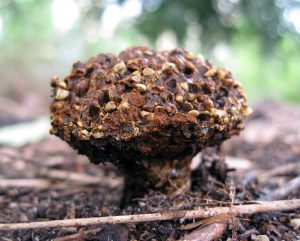 Consists of peridial membrane and gleba (internal contents with spores). The mushroom itself is quite large, up to 30 cm in height and up to 20 in diameter. The shape of a young pisolitus is close to a ball, but in the process of growth it acquires an elongated shape. The fruiting body sits on a pseudopod that goes deep into the ground (it can be up to 8 cm long). There are specimens without pseudopods. The part of the fruiting body facing the ground is covered with greenish or yellowish mycelium filaments.
Consists of peridial membrane and gleba (internal contents with spores). The mushroom itself is quite large, up to 30 cm in height and up to 20 in diameter. The shape of a young pisolitus is close to a ball, but in the process of growth it acquires an elongated shape. The fruiting body sits on a pseudopod that goes deep into the ground (it can be up to 8 cm long). There are specimens without pseudopods. The part of the fruiting body facing the ground is covered with greenish or yellowish mycelium filaments.
The peridial membrane is rather thin (only 0.1 cm). In young mushrooms, the peridium is white and soft, in old ones it becomes yellowish, then reddish with black or greenish spots and dry. Upon reaching maturity, the shell cracks and disintegrates into flakes, revealing dried-up lumps and allowing spores to spread.
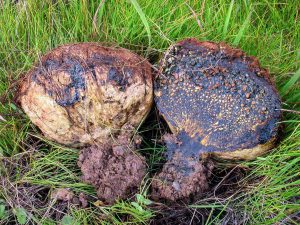 In young specimens, gleb is represented by small light peridioles in a black gel-like mass. Gleba ripens from the top of the fruiting body. In this case, the peridiols turn red and turn into a spore powder of yellowish brown color. At first, the smell of dye pisolithus is similar to the usual mushroom smell, later it becomes unpleasant.
In young specimens, gleb is represented by small light peridioles in a black gel-like mass. Gleba ripens from the top of the fruiting body. In this case, the peridiols turn red and turn into a spore powder of yellowish brown color. At first, the smell of dye pisolithus is similar to the usual mushroom smell, later it becomes unpleasant.
Spore powder
The spores of this fungus are of medium size, spherical in shape, rather thick walls and a yellow-brown color. The surface of the spores is covered with thorns.
Names
Scientific synonyms:
- Lycoperdon capitatum J.F. Gmel., 1792 basionym
- Scleroderma tinctorium Pers., 1801
- Pisolithus arhizus (Scop.) Rauschert, 1959
- Lycoperdodes arrhizon (Scop.) Kuntze, 1891
Russian names: along with pisolithus dyeing, the synonym Pizolitus rootless (Pisolithus arhizus).
The binomial name Pisolithus tinctorius Jeppson was first given in The Gasteromycetes of the Eastern United States and Canada The Gasteromycetes of the Eastern United States and Canada.
Generic name Pisolithus comes from the Greek words πίσος (pisos) - "peas" and λίθος (lithos) - "stone"; species epithet tinctorius - from lat. tinctorius - "dyeing".
Ecology and distribution
Previously, it was considered a cosmopolitan species, found almost everywhere except for the polar regions. Currently, the boundaries of the area of distribution are being revised, since the forms growing in the tropics and the Southern Hemisphere have been allocated to separate species.The area of distribution of the pizolithus dyeing house is thus likely to cover the Holarctic, while populations from South Asia, Central and South Africa, New Zealand, and Australia appear to be related species.
Grows singly or in small groups on acidic, depleted or disturbed soils, in overgrown clearings, in old quarries, on green dumps, but never on limestone soils. It is extremely rare in intact forests. Possesses a wide range of symbiotic partners; usually forms mycorrhiza with conifers and birches, but also with oaks, poplars and eucalyptus trees.
In Russia, it is found in the European part, in the Caucasus, in Western Siberia and in the Far East, in summer and early autumn.
List of species
There are only 12 species in the genus, of which the dye pisolithus is best known:
| Binomial name | Year | Spreading | Notes (edit) |
|---|---|---|---|
| Pisolithus abditusKanch., Sihan., Hogetsu & Watling | 2003 | Thailand. | A new species discovered in g. |
| Pisolithus albus (Cooke & Massee) Priest | 1998 | Endemic to Australia; introduced in other countries (Spain, China, Morocco, etc.). | |
| Pisolithus arenariusAlb. & Schwein. | 1805 | Often referred to as a synonym for Pisolithus tinctorius (Pers.) Coker & Couch | |
| Pisolithus aurantioscabrosusWatling | 1995 | Malacca Peninsula. | Under the trees of the kind Shorea parvifolia. |
| Pisolithus australis(Lév.) E. Fisch. | 1900 | Australia. | |
| Pisolithus hypogaeusS.R. Thomas, Dell & Trappe | 2003 | Endemic to Australia. | Grows on sandy soil under eucalyptus trees. |
| Pisolithus indicusNatarajan & Senthil. | 2005 | Karnataka, India. | It grows in symbiosis with Indian vateria. |
| Pisolithus kisslingiiE. Fisch. | 1906 | Sumatra. | |
| Pisolithus marmoratus(Berk.) E. Fisch. | 1900 | Australia, New Zealand. | |
| Pisolithus microcarpus (Cooke & Massee) G. Cunn. | 1931 | Australia. | Forms mycorrhiza with eucalyptus. |
| Pisolithus pisiformis(Lloyd) Rick | 1961 | ||
| Pisolithus tinctorius(Pers.) Coker & Couch | 1928 | Holarctic. | Typical view. |
Other information about the mushroom
The generic name of the described mushroom comes from two words with Greek roots: pisos (which means “pea”) and lithos (translated into Russian as “stone”). The dye pizolithus contains a special substance called triterpene pisosterol. It is isolated from the fruiting body of the fungus and used for the production of drugs that can effectively fight active tumors.
Rootless pisolithus has the ability to grow on acidic and nutrient-poor soils. This quality, in turn, gives the mushrooms of this species to have a significant ecological value for the restoration and cultivation of forests in areas with soils that have technogenic disturbances. The same type of mushroom is used for reforestation in quarries and dumps.

